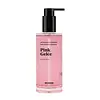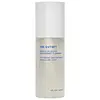What's inside
What's inside
 Key Ingredients
Key Ingredients

 Benefits
Benefits

 Concerns
Concerns

No concerns
 Ingredients Side-by-side
Ingredients Side-by-side

Water
Skin ConditioningCitrus Aurantium Dulcis Flower Water
Skin ConditioningGlycerin
HumectantSodium C14-16 Olefin Sulfonate
CleansingCocamidopropyl Betaine
CleansingSea Salt
AbrasivePropanediol
SolventPyrus Malus Fruit Extract
Skin ConditioningCitrullus Lanatus Fruit Extract
Skin ConditioningSalix Alba Bark Extract
AstringentLens Esculenta Fruit Extract
Skin ConditioningSodium PCA
HumectantMorus Alba Leaf Extract
Skin ConditioningPinus Pinaster Bark Extract
AntioxidantHelichrysum Stoechas Flower Extract
PerfumingPrunus Armeniaca Fruit Extract
Skin ConditioningTerminalia Ferdinandiana Fruit Extract
AntioxidantMelia Azadirachta Flower Extract
Skin ConditioningMelia Azadirachta Leaf Extract
Skin ConditioningCorallina Officinalis Extract
Skin ConditioningBetaine
HumectantCoccinia Indica Fruit Extract
Skin ConditioningCitric Acid
BufferingSodium Lactate
BufferingButylene Glycol
HumectantCaprylhydroxamic Acid
1,2-Hexanediol
Skin ConditioningSodium Benzotriazolyl Butylphenol Sulfonate
UV AbsorberWater, Citrus Aurantium Dulcis Flower Water, Glycerin, Sodium C14-16 Olefin Sulfonate, Cocamidopropyl Betaine, Sea Salt, Propanediol, Pyrus Malus Fruit Extract, Citrullus Lanatus Fruit Extract, Salix Alba Bark Extract, Lens Esculenta Fruit Extract, Sodium PCA, Morus Alba Leaf Extract, Pinus Pinaster Bark Extract, Helichrysum Stoechas Flower Extract, Prunus Armeniaca Fruit Extract, Terminalia Ferdinandiana Fruit Extract, Melia Azadirachta Flower Extract, Melia Azadirachta Leaf Extract, Corallina Officinalis Extract, Betaine, Coccinia Indica Fruit Extract, Citric Acid, Sodium Lactate, Butylene Glycol, Caprylhydroxamic Acid, 1,2-Hexanediol, Sodium Benzotriazolyl Butylphenol Sulfonate
Water
Skin ConditioningGlycerin
HumectantPropanediol
SolventDecyl Glucoside
CleansingCaprylyl Caprylate
EmollientCaprylyl Glucoside
CleansingCassia Angustifolia Seed Polysaccharide
Skin ConditioningChamomilla Recutita Flower Extract
MaskingHelianthus Annuus Extract
EmollientCitrus Aurantium Dulcis Fruit Water
MaskingCitrus Limon Fruit Water
MaskingHelianthus Annuus Seed Oil
EmollientPersea Gratissima Oil
Skin ConditioningVitis Vinifera Seed Oil
EmollientRosmarinus Officinalis Leaf Extract
AntimicrobialPyrus Malus Fruit Extract
Skin ConditioningOryza Sativa Bran Extract
Skin ConditioningSerine
MaskingAlanine
MaskingGlycine
BufferingLysine Hcl
Skin ConditioningThreonine
Arginine
MaskingProline
Skin ConditioningHydrogenated Palm Glycerides Citrate
EmollientHeptyl Glucoside
Phenoxyethanol
PreservativeDehydroxanthan Gum
Emulsion StabilisingCoco-Glucoside
CleansingGlyceryl Oleate
EmollientCaprylyl Glycol
EmollientGlutamic Acid
HumectantPCA
HumectantCitric Acid
BufferingTrisodium Ethylenediamine Disuccinate
Tocopherol
AntioxidantBetaine
HumectantPotassium Hydroxide
BufferingPotassium Sorbate
PreservativeSodium Benzoate
MaskingSodium Lactate
BufferingSodium PCA
HumectantWater, Glycerin, Propanediol, Decyl Glucoside, Caprylyl Caprylate, Caprylyl Glucoside, Cassia Angustifolia Seed Polysaccharide, Chamomilla Recutita Flower Extract, Helianthus Annuus Extract, Citrus Aurantium Dulcis Fruit Water, Citrus Limon Fruit Water, Helianthus Annuus Seed Oil, Persea Gratissima Oil, Vitis Vinifera Seed Oil, Rosmarinus Officinalis Leaf Extract, Pyrus Malus Fruit Extract, Oryza Sativa Bran Extract, Serine, Alanine, Glycine, Lysine Hcl, Threonine, Arginine, Proline, Hydrogenated Palm Glycerides Citrate, Heptyl Glucoside, Phenoxyethanol, Dehydroxanthan Gum, Coco-Glucoside, Glyceryl Oleate, Caprylyl Glycol, Glutamic Acid, PCA, Citric Acid, Trisodium Ethylenediamine Disuccinate, Tocopherol, Betaine, Potassium Hydroxide, Potassium Sorbate, Sodium Benzoate, Sodium Lactate, Sodium PCA
Alternatives
Ingredients Explained
These ingredients are found in both products.
Ingredients higher up in an ingredient list are typically present in a larger amount.
Betaine is a common humectant (a substance that promotes retention of moisture). It's known to be gentle on the skin and can help balance hydration.
This ingredient is best for improving hydration and soothing irritated skin. Studies also show it helps even out skin tone.
Fun fact: Betaine is naturally created in the skin and body. The kind found within cosmetic products can be either plant-derived or synthetic.
Another name for betaine is trimethylglycine.
Learn more about BetaineCitric Acid is an alpha hydroxy acid (AHA) naturally found in citrus fruits like oranges, lemons, and limes.
Like other AHAs, citric acid can exfoliate skin by breaking down the bonds that hold dead skin cells together. This helps reveal smoother and brighter skin underneath.
However, this exfoliating effect only happens at high concentrations (20%) which can be hard to find in cosmetic products.
Due to this, citric acid is usually included in small amounts as a pH adjuster. This helps keep products slightly more acidic and compatible with skin's natural pH.
In skincare formulas, citric acid can:
While it can provide some skin benefits, research shows lactic acid and glycolic acid are generally more effective and less irritating exfoliants.
Most citric acid used in skincare today is made by fermenting sugars (usually from molasses). This synthetic version is identical to the natural citrus form but easier to stabilize and use in formulations.
Read more about some other popular AHA's here:
Learn more about Citric AcidGlycerin is already naturally found in your skin. It helps moisturize and protect your skin.
A study from 2016 found glycerin to be more effective as a humectant than AHAs and hyaluronic acid.
As a humectant, it helps the skin stay hydrated by pulling moisture to your skin. The low molecular weight of glycerin allows it to pull moisture into the deeper layers of your skin.
Hydrated skin improves your skin barrier; Your skin barrier helps protect against irritants and bacteria.
Glycerin has also been found to have antimicrobial and antiviral properties. Due to these properties, glycerin is often used in wound and burn treatments.
In cosmetics, glycerin is usually derived from plants such as soybean or palm. However, it can also be sourced from animals, such as tallow or animal fat.
This ingredient is organic, colorless, odorless, and non-toxic.
Glycerin is the name for this ingredient in American English. British English uses Glycerol/Glycerine.
Learn more about GlycerinPropanediol is an all-star ingredient. It softens, hydrates, and smooths the skin.
It’s often used to:
Propanediol is not likely to cause sensitivity and considered safe to use. It is derived from corn or petroleum with a clear color and no scent.
Learn more about PropanediolPyrus Malus Fruit Extract is extract from Apples. Apples are rich in Vitamin C, sugars, and antioxidants.
The sugar in Apples are humectants and help hydrate the skin. On top of that, apples also contain some acids, such as malic acid. These acids may have a mild exfoliating effect.
Last, the phytochemicals found in apples are strong antioxidants. These antioxidants help with anti-aging as they protect your skin cells against oxidative damage.
Learn more about Pyrus Malus Fruit ExtractSodium Lactate is the sodium salt of lactic acid, an AHA. It is a humectant and sometimes used to adjust the pH of a product.
This ingredient is part of our skin's NMF, or natural moisturizing factor. Our NMF is essential for the hydration of our top skin layers and plasticity of skin. NMF also influences our skin's natural acid mantle and pH, which protects our skin from harmful bacteria.
High percentages of Sodium Lactate can have an exfoliating effect.
Fun fact: Sodium Lactate is produced from fermented sugar.
Learn more about Sodium LactateSodium PCA is the sodium salt of pyroglutamic acid. It is naturally occurring in our skin's natural moisturizing factors where it works to maintain hydration.
The PCA stands for pyrrolidone carboxylic acid, a natural amino acid derivative.
This ingredient has skin conditioning, anti-inflammatory, and humectant properties. Humectants help hydrate your skin by drawing moisture from the air. This helps keep your skin moisturized.
Learn more about Sodium PCAWater. It's the most common cosmetic ingredient of all. You'll usually see it at the top of ingredient lists, meaning that it makes up the largest part of the product.
So why is it so popular? Water most often acts as a solvent - this means that it helps dissolve other ingredients into the formulation.
You'll also recognize water as that liquid we all need to stay alive. If you see this, drink a glass of water. Stay hydrated!
Learn more about Water